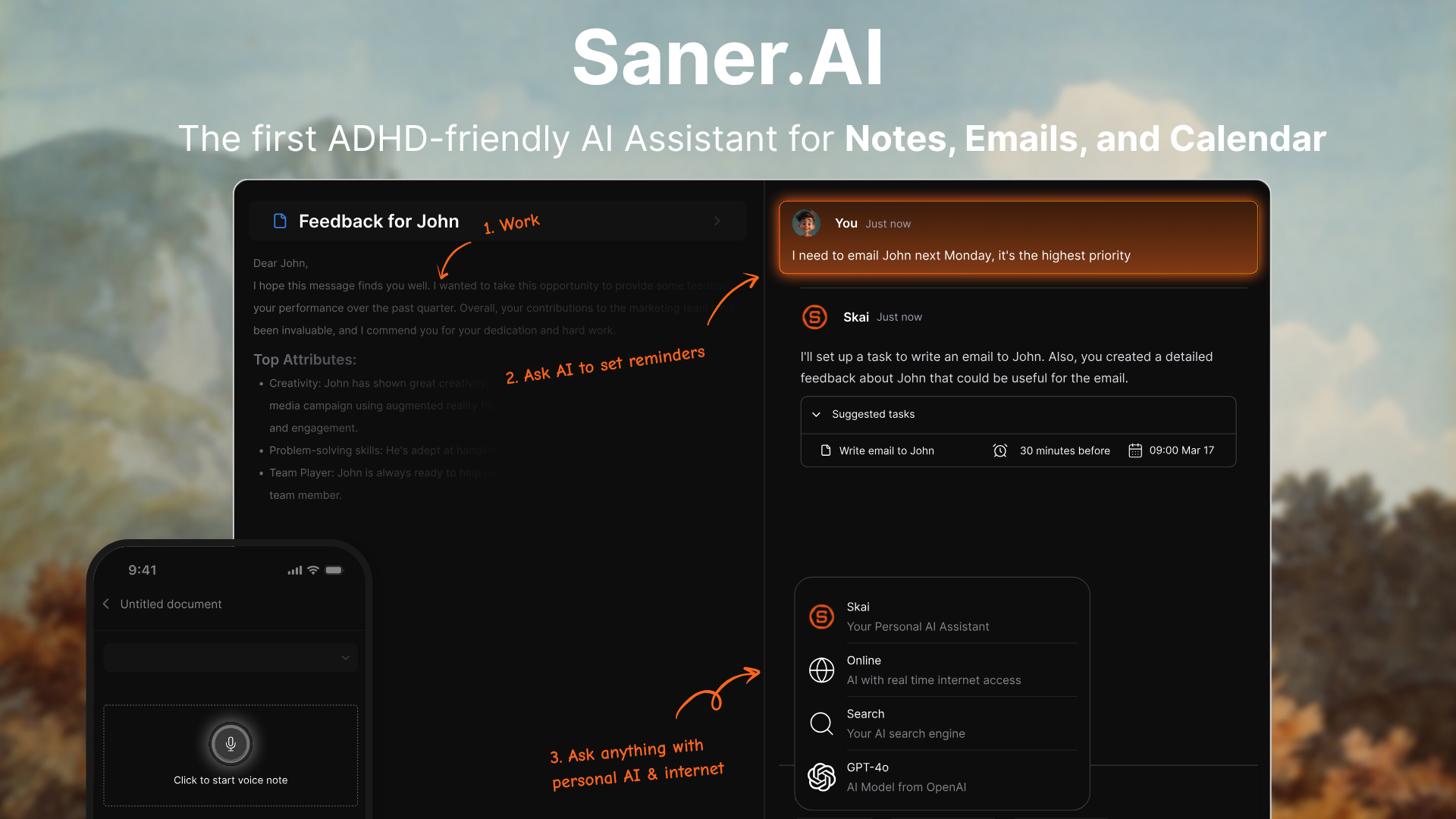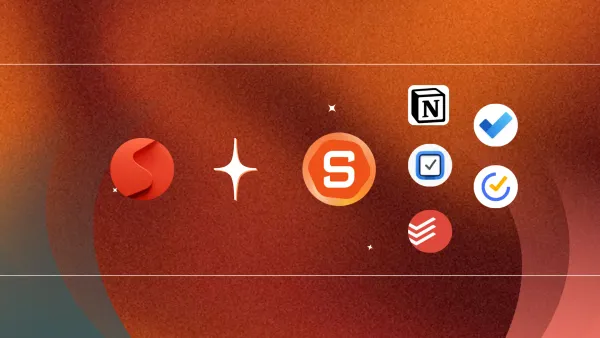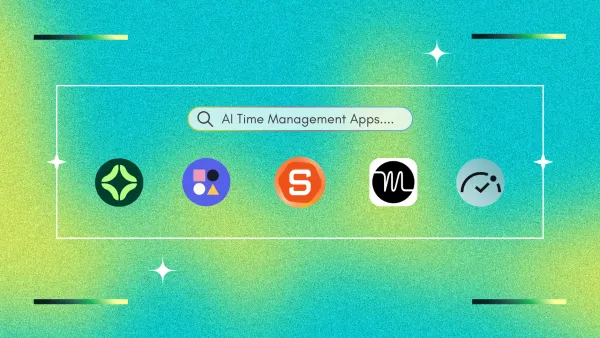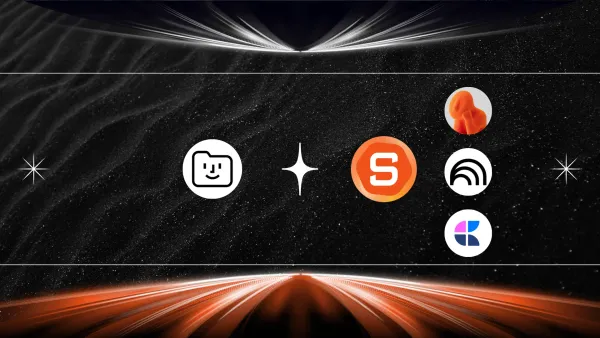ADHD Planners: We Tested the Best 10
The best 10 ADHD Planners in 2025 are: Saner.AI, Finch, Tiimo, Sunsama, Todoist, Goblins.tools,...
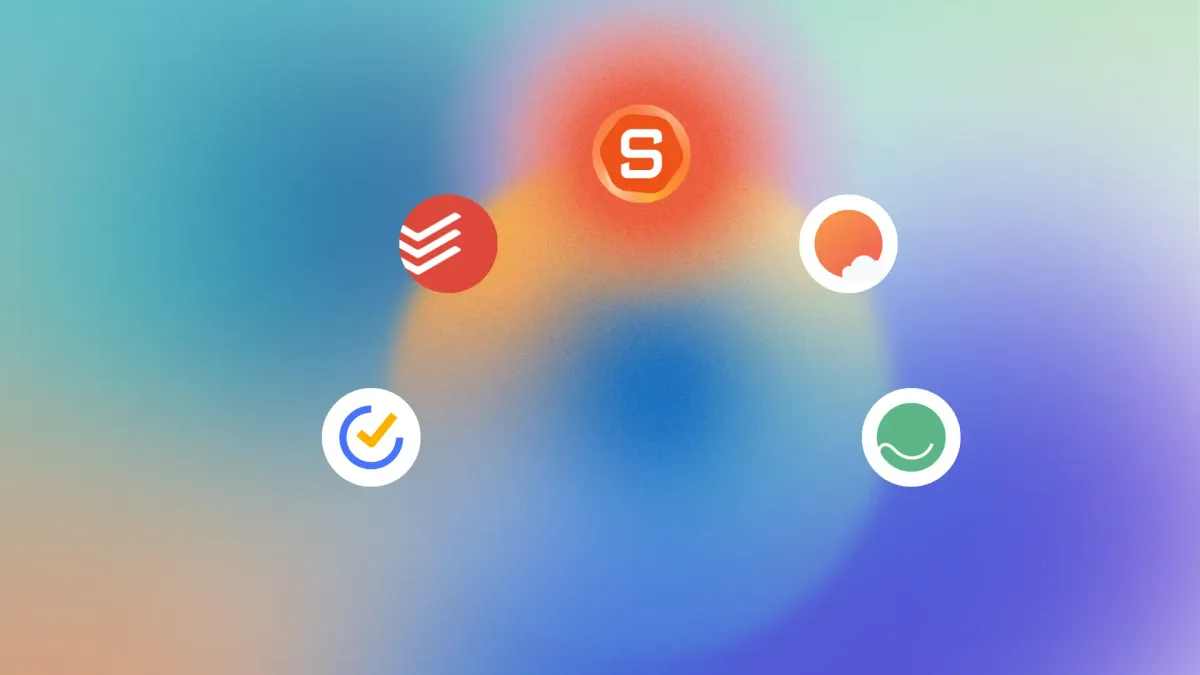
10 Best ADHD Planners in 2025
If you have ADHD, you’ve probably wrestled with traditional planners - buying them with hope, then abandoning them in frustration.
That’s because most planning systems weren’t made with neurodivergent brains in mind. An ADHD planner is more than a calendar - it's a tool designed to support the way your brain naturally works, helping with time blindness, task overwhelm, and executive dysfunction.
Whether you're juggling work, school, parenting, or a little bit of everything, the right planner for ADHD can become a lifeline -not by enforcing rigid schedules, but by creating flexible, dopamine-friendly systems that reduce friction and increase follow-through.
This guide covers:
- What makes ADHD planners different
- Types of ADHD planners (analog, digital, hybrid)
- Features to look for
- A comparison of the best ADHD planners in 2025
- Daily tips and mistakes to avoid
- Real stories from ADHDers
- FAQs and supporting articles for deeper reading
1. What is ADHD?

Attention-deficit/hyperactivity disorder (ADHD) isn’t just about being easily distracted or extra energetic - it’s a brain-based condition that affects how people focus, stay organized, manage time, and control impulses. It shows up in a few key ways:
- Inattention means having a hard time staying focused, finishing tasks, or keeping things organized. It's not about being lazy or not understanding—your brain just gets pulled in different directions quickly.
- Hyperactivity often looks like constant movement, fidgeting, or trouble sitting still. In adults, it might feel more like inner restlessness or a nonstop need to talk or multitask.
- Impulsivity shows up as speaking or acting without thinking things through, like interrupting, overspending, or struggling to wait your turn. It can also mean craving instant results and getting frustrated with long-term goals.
Everyone with ADHD is different, but these traits can make everyday planning and follow-through feel much harder. That’s why finding the right ADHD-friendly systems, like planners that actually work for your brain, is so important.
What’s Different About ADHD Planners?
Standard planners are made for linear thinkers with consistent energy and attention. ADHD brains don’t work that way - and that’s not a flaw.
People with ADHD often face:
- Time blindness (struggling to sense how long tasks take)
- Executive dysfunction (difficulty starting, planning, and completing tasks)
- Task overwhelm (freezing when too many to-dos pile up)
- Dopamine-driven motivation (craving novelty and stimulation)
- Hyperfocus (deep focus that leads to missed transitions)
An effective ADHD planner is designed to work with these traits, not against them.
Key ADHD-Specific Needs:
- Low cognitive load: It should be easy to use even on bad brain days.
- Visual cues: Color coding, icons, or layouts that guide attention.
- Built-in flexibility: Adaptable for emotional regulation and energy shifts.
- Quick resets: Systems to help you restart after falling off track (which will happen - and that’s okay).
Types of ADHD Planners (Analog, Digital, Hybrid)
1) 📝 Analog Planners (Paper-Based)
Best for: tactile thinkers, minimal screen time, creative expression
Pros:
- No tech distractions
- Writing helps with memory
- Customizable (e.g., bullet journaling)
Cons:
- Hard to move tasks around
- No reminders or automation
- Can get lost or forgotten
Examples: Planner Pad, Passion Planner, Bullet Journal, The ADHD Planner by Dani Donovan
2) 💻 Digital Planners & Apps
Best for: tech-savvy users, automation lovers, ADHDers who need reminders
Pros:
- Syncs across devices
- Automated reminders and routines
- Easier to reorganize tasks
Cons:
- Easy to overcomplicate
- Risk of doomscrolling
- Can get buried under notifications
Examples:
- Saner.ai – Designed by ADHDers to reduce context switching
- Tiimo – Visual, routine-based planner
- Sunsama – Daily planning with task batching
- Motion – AI schedules tasks for you automatically
- Notion ADHD templates – Customizable but potentially overwhelming
3) 🧩 Hybrid Systems
Best for: people who need structure + flexibility
Many ADHDers use a paper planner for daily planning, and a digital app (like Saner.ai or Google Calendar) for long-term scheduling and reminders.
Pro tip: Use a paper planner to set intentions each morning, and digital tools for backup and scheduling.
Top Features to Look For in an ADHD Planner
To handle the rollercoaster of ADHD motivation and memory, your planner should include:
| ✅ Feature | 🔍 Why It Matters |
|---|---|
| Visual Layout | Supports quick scanning and attention |
| Simple Navigation | Reduces friction and decision fatigue |
| Time Blocking | Helps visualize how long tasks take |
| Reminders & Nudges | Supports working memory and follow-through |
| Low Friction Setup | Quick entry, minimal steps |
| Daily Reset System | Helps restart when you fall behind |
| Customizable Views | Match your focus style (lists, timelines, colors) |
| Flexible Scheduling | Allows “wiggle room” for ADHD swings |
Best ADHD Planners in 2025 [Comparison Table]
| Planner / App | Format | Best For | ADHD-Friendly Rating | Price | Notes |
|---|---|---|---|---|---|
| Saner.AI | Digital AI | Notes, Email Management, Tasks planning | ⭐⭐⭐⭐⭐ | Freemium | Designed by ADHDers. Understands messy notes. |
| Finch | Digital | Emotional check-ins, self-care routines | ⭐⭐⭐⭐ | Free+ | Gamified self-care. Feels like a pet app. |
| Tiimo | Digital | Routine building with visual timers | ⭐⭐⭐⭐ | Paid | Clean visuals and daily reminders. |
| Sunsama | Digital | Daily task batching, time blocking | ⭐⭐⭐⭐ | $20/mo | Great UI for scheduling focus blocks. |
| Todoist | Digital | Simple to-do lists | ⭐⭐⭐⭐ | Free+ | Lightweight task manager, ADHD-friendly UI. |
| Goblins.tools | Digital | Breaking down tasks, executive function | ⭐⭐⭐⭐⭐ | Free | AI helps chunk complex tasks into steps. |
How to Choose the Right ADHD Planner for You
Here are a few guiding questions:
- Do I need reminders, or do I prefer pen and paper?
- What overwhelms me more: empty pages or cluttered apps?
- Do I prefer structure or freedom?
- What’s my tech comfort level?
- Do I need visual feedback (progress bars, emojis, colors)?
Also consider your ADHD subtype:
- Hyperactive: needs calming visuals, simple flow
- Inattentive: needs bold prompts, reminders
- Combined: flexibility + structure
10 Best ADHD Planners to manage work & life
What are the best ADHD Planners in 2025?
The best 10 ADHD Planners in 2025 are: Saner.AI, Finch, Tiimo, Sunsama, Todoist, Goblins.tools,...
1) Saner.AI - AI assistant

Saner.ai is an ADHD-friendly AI assistant that helps you turn chaotic thoughts into clear tasks.
It’s like having a personal planner that understands how your brain works, especially if you struggle with attention, overwhelm, or remembering what you were just doing.
Key features
- Brain-Dump to Tasks: Just type or speak your thoughts - Saner turns them into tasks, reminders, or scheduled plans
- Smart Task Assistant: You can chat with AI to schedule, break down, or reschedule tasks in plain language
- Proactive check-in: Every morning, AI scans through your inbox, calendar, and gives you the optimal action plan for the day
- Gmail Integration: Automatically pulls follow-ups and to-dos straight from your inbox
- Voice Capture: Record a voice,e note, and it’ll summarize or extract the to-dos for you
- Focus mode: Pins one task at a time, so you’re not distracted by a huge list
- ADHD-Friendly Design: Built specifically with input from 200+ ADHD users
- Imports from everything: I brought in stuff from Apple Notes, Markdown, and Google Docs
- Works on mobile and desktop so I can use it on the go
- Calendar integration: Pulls deadlines and tasks into your schedule, no drag-and-drop needed
What I liked
- I love how I can just brain-dump whatever’s in my head and it figures out the action items for me - no structure needed.
- The task assistant feels like texting a helpful friend. I can say “remind me to prep for my meeting,” and it just handles it.
- It’s smart enough to pull tasks from my email, which saves me from forgetting follow-ups.
- Everything - notes, tasks, calendar - lives in one space. No more jumping between five apps.
- Most ADHD planners feel like they demand more organization. Saner does the opposite—it calms the chaos.

Cons
- Requires internet access for full functionality.
Pricing
- Free
- Starter: Monthly at $8/month, Annually at $6/month (with early user discount)
- Standard: Monthly at $16/month, Annually at $12/month (with early user discount)
Suitable for
Anyone with ADHD (or ADHD-like tendencies) who needs help turning messy thoughts into doable steps. It’s ideal if you constantly lose track of your tasks or hate traditional to-do apps that expect you to stay organized on your own.
Saner.AI Reviews
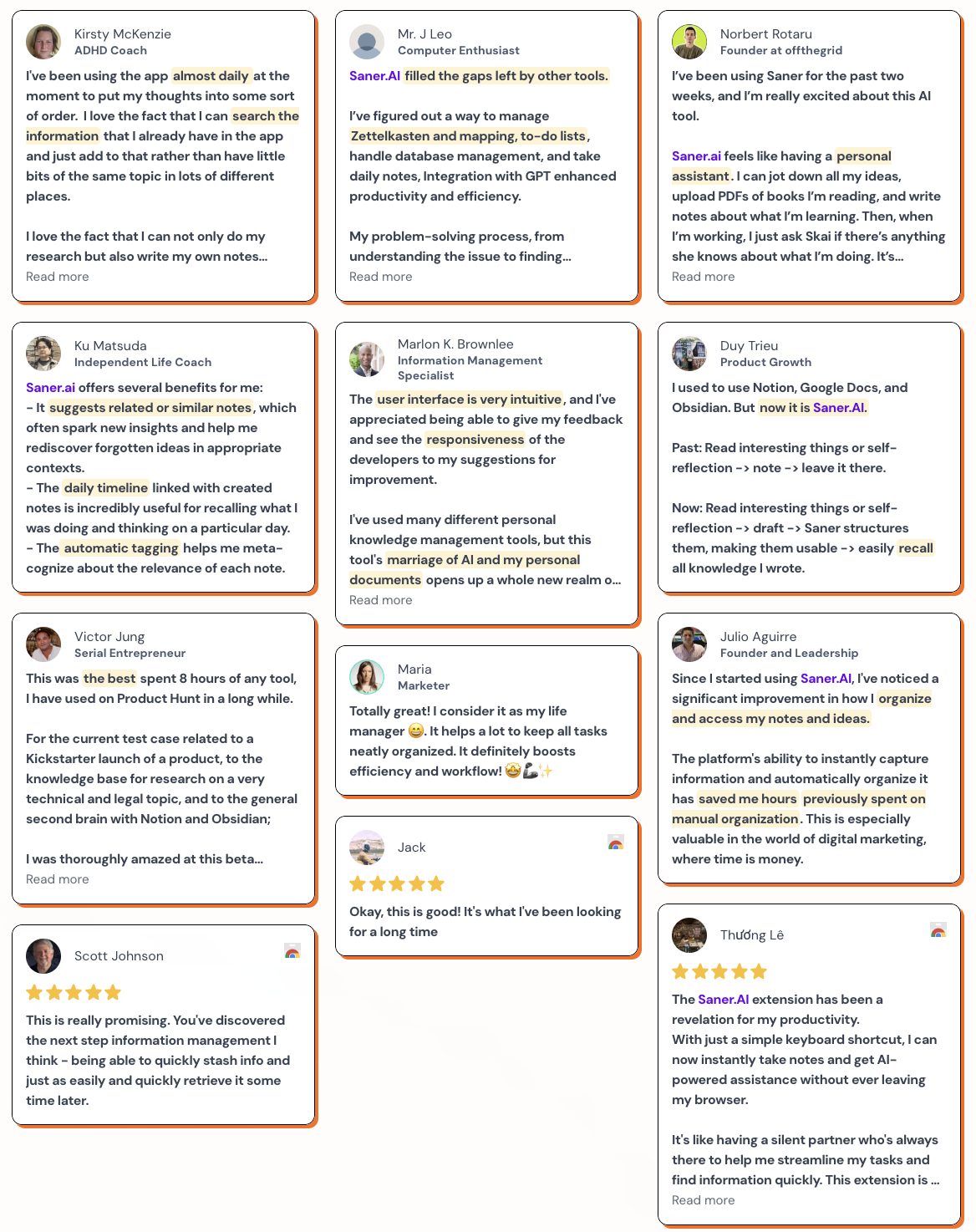
How to start
Just go to saner.ai, make a free account, connect your tools, and start chatting with Skai. The AI will suggest tasks and help you organize without the usual friction.
Stay on top of life with the top ADHD Planner
2) Todoist
Todoist is a flexible task manager that can work as an ADHD planner. I’ve tried a bunch of tools to get organized, but Todoist stands out for how fast it is to capture thoughts, structure routines, and stay on top of daily priorities. It’s not built specifically for ADHD, but it checks a lot of the boxes.
Key features
- Quick Add: Capture tasks instantly using natural language
- Today & Upcoming Views: Helps you focus on what’s next without getting overwhelmed
- Recurring Tasks: Great for building daily routines and ADHD-friendly habits
- Labels & Filters: Sort tasks by priority, energy level, or context
- Calendar Sync: See tasks alongside your schedule with drag-and-drop planning
- Cross-Platform: Works on desktop, mobile, and browser—stays with you
What I liked
- I like how easy it is to dump thoughts into Todoist without overthinking where they go. The Inbox just catches everything.
- The “Today” view is good - it gives me a clean list of what I need to do now, not everything I forgot to finish last week.
- Setting up recurring routines (like journaling or meds) was smooth.
What I disliked
- The free version is limited - no reminders unless you go Pro, which is kind of essential for ADHD.
- There’s no built-in time blocking. You can sync with Google Calendar, but I wish it were native.
- Custom filters are powerful, but setting them up can be intimidating
- It’s not visual or gamified, which some ADHD planners are. If you need dopamine boosts or habit tracking visuals, this might feel plain.
Pricing
- Free plan with basic task management
- Pro plan around $4/month with reminders, filters, and calendar sync
- Business plan for teams at $6/month
Suitable for
Anyone with ADHD looking for a clean, focused way to manage tasks and routines - especially if you already like checklists.How to start
Just download Todoist on any device, dump a few tasks into your Inbox, and try the “Today” view. If it clicks, the Pro plan is worth it for the reminders alone.
Todoist reviews (source)

3) Sunsama

Sunsama is a daily planning tool designed to help you build intentional, realistic schedules. It guides you through planning your day, estimating time for tasks, and actually sticking to what you plan.
It’s best suited for people who want more mindful focus, fewer distractions, and a better sense of control over their time.
Key features
- Guided daily planning: Helps you plan each day intentionally without feeling overwhelmed
- Time blocking: Easily assign realistic durations to tasks so you don’t overcommit
- Focus Mode: Built-in Pomodoro timer for staying on track
- End-of-day review: Reflect on what you did and carry over what’s left
- Integrations: Syncs with Google Calendar, Outlook, Asana, Todoist, Trello, Gmail, and Slack
What I liked
- The daily planning ritual can keeps you from trying to do too much in one day
- I like that it forces me to estimate how long each task will take
- Focus Mode is perfect for staying locked in, especially when I’d usually drift
- Shutdown ritual at the end of the day helps me feel like I actually accomplished something
What I disliked
- It takes a bit of effort to get into the habit - at first, it felt like one more thing to manage
- The mobile app works, but it’s not as smooth as desktop
- $20/month is a little steep if you’re on a tight budget
- Not made for managing big projects with timelines or dependencies
- Not make for storing documents or managing emails like Saner.AI
Pricing
- 14-day free trial available
- $20/month or $16/month if billed annually
- No free forever plan
Suitable for:
People with ADHD (or ADHD-like tendencies) who want a daily planner that guides them toward focus, realistic expectations, and fewer distractions. Great for solopreneurs, students, and anyone trying to tame a chaotic brain.
How to start:
Just go to Sunsama, start the trial, and follow the daily planning ritual. No credit card needed.
Sunsama reviews (source)

4) Any.do
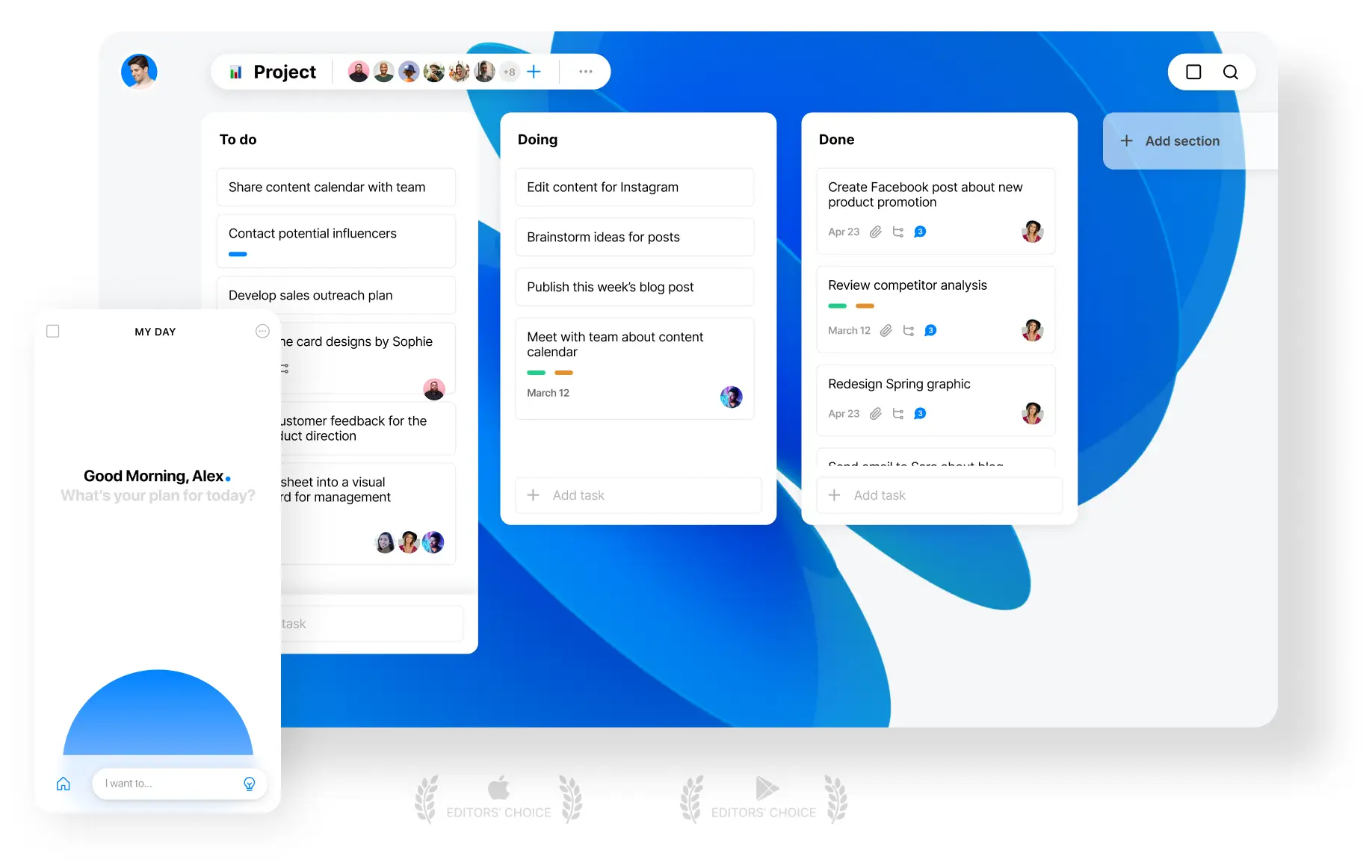
Any.do is a simple ADHD planner that helps you manage tasks, set reminders, and stay focused throughout the day. It combines to-dos, calendars, and a “Focus Mode” to keep your attention on what matters
Key features
- Smart To-Dos: Break big tasks into subtasks, color-code lists, and drag-and-drop to organize your day
- Calendar Sync: Connects with Google, Outlook, and Apple Calendar to reduce time blindness
- Focus Mode: A Pomodoro-style timer with a visual tree that dies if you get distracted (yes, really)
- Cross-Device Sync: Works across desktop, mobile, and even wearables
What I liked
- I like how easy it is to break things down. Subtasks and color labels make big projects feel manageable.
- The calendar integration helps me see how much time I actually have
- Focus Mode is great when I need a gentle push to sit down and just start.
- The mobile app is clean and fast.
What I disliked
- Most ADHD-friendly features, like Focus Mode and location reminders, are locked behind the Premium plan.
- Focus Mode only works on mobile right now.
- You can't ask AI to schedule tasks, search notes or plan the day like with Saner.AI
- The interface can feel a bit cluttered when you start adding boards and templates.
Pricing
- Free plan available with unlimited tasks and calendar sync
- Premium plan starts at $5.99/month with Focus Mode, smart reminders, and more
- Family and Team plans are available with collaboration features
Suitable for:
People with ADHD are looking for a lightweight, structured planner that supports routines, reminders, and focus without too much setup.
How to start:
Go to any.do, create a free account, and start planning your day. Try the Focus Mode and My Day features if you’re on mobile.
Any.do Review (source)

5) TickTick

TickTick is an ADHD planner to stay on top of tasks, routines, and focus time. It combines to-do lists, calendar views, habit tracking, and a built-in Pomodoro timer, all in one clean interface.
Key features
- Quick-add tasks with voice, widgets, or natural language input
- Calendar views with time-blocking and drag-and-drop scheduling
- Built-in Pomodoro timer and focus stats
- Kanban boards and markdown notes for flexible workflows
- Syncs across all devices and integrates with Google Calendar, Zapier, and more
What I liked
- I like how fast it is to capture a thought.
- The Pomodoro timer and focus stats can help you stay on track.
- The habit tracker works well for daily routines, and it’s satisfying to build streaks.
- I like that it’s customizable
What I disliked
- It can feel like a lot if you try to use every feature at once. I had to start small and build up.
- You don't have an Assistant who you can ask to schedule tasks, search notes or plan the day like with Saner.AI
- Some of the best features (like calendar sync and smart lists) are only in the paid plan.
- You have to remember to open it daily. It won’t magically keep you organized unless you build the habit.
Pricing
- Free plan available with most core features
- Premium plan at $3.99/month or $35.99/year
Suitable for
People with ADHD who want an all-in-one planner that helps them capture ideas quickly, stay focused, and organize their time without chaos.
How to start
Just download TickTick, set up a few habits or tasks, and try the Pomodoro timer. Start simple — it really shines once you get into a rhythm.
TickTick Reviews (Source)

6) Llama Life

Llama Life is a playful, ADHD-friendly planner that helps you focus on one task at a time. It’s built around timers, sounds, and visual rewards - all designed to tackle time blindness, task paralysis, and overwhelm.
Key features
- Time-boxed task lists with countdown or pie timers
- Soundscapes and chimes to start, pause, or end tasks
- Visual rewards like confetti and emojis when you finish something
- “Preset Lists” for routines like mornings or shutdowns
- Shows how long your list will take and when you’ll finish
- Works on web, iOS, and Android
What I liked
- I like how it nudges me to focus without being bossy.
- “Preset Lists” are helpful - I don’t have to rebuild my morning routine every day.
- It gives you a little dopamine boost when you check something off. The visual rewards actually make a difference.
What I disliked
- No hard scheduling—you can set durations but not strict start times, which some folks might want.
- If you’re not looking at the app, it’s easy to miss the timer ending. I wish notifications were stronger.
- You don't have an Assistant who you can ask to schedule tasks, search notes or plan the day like with Saner.AI
- The paid version is affordable, but it is a subscription—something to keep in mind.
Pricing
- Free trial available
- Around $6/month
- Discounts for 6-month and yearly plans
Suitable for:
People with ADHD or similar challenges who want an ADHD Planner that’s simple, visual, and fun
How to start:
Head to Llama Life, try the free trial, and see how it fits into your day.
Llama Life reviews (source)

7) Structured
Structured is a visual ADHD planner that helps you see your day at a glance. It combines your tasks, calendar events, and habits into a simple timeline so you don’t have to juggle multiple apps or constantly replan your day.
Key features
- Visual Timeline: Combines to-dos and calendar events into a single view
- Replan Swipe: Easily reschedule tasks by swiping them to another time
- Recurring Tasks: Set routines like morning planning or gym sessions
- Inbox & Subtasks: Break big tasks into smaller steps so they feel doable
- Focus Timer: Built-in timer to help you start tasks and stay on track
- Cross-Device Sync: Works across iOS, Android, Mac, and Apple Watch
What I liked
- I like how visual it is
- The replan feature is great. If I miss something, I can just swipe it to another time.
- Having one place for events, reminders, and to-dos keeps me from forgetting stuff.
What I disliked
- It doesn’t have habit streaks or any built-in motivation
- Notifications can be a bit glitchy, especially on iOS.
- ,
- You need the Pro plan to sync with calendars or set up recurring routines.
- The focus timer is basic
Pricing
- Free plan with core features
- Pro plan unlocks recurring tasks, calendar sync, and more
- Lifetime option available
Suitable for
Anyone with ADHD (or a similar brain) who wants a visual, drag-and-drop planner to organize time, reduce overwhelm, and actually get stuff done.
How to start
Download the app, connect your calendar, and start adding tasks. That’s it.
Structured review (source)

8) Tiimo
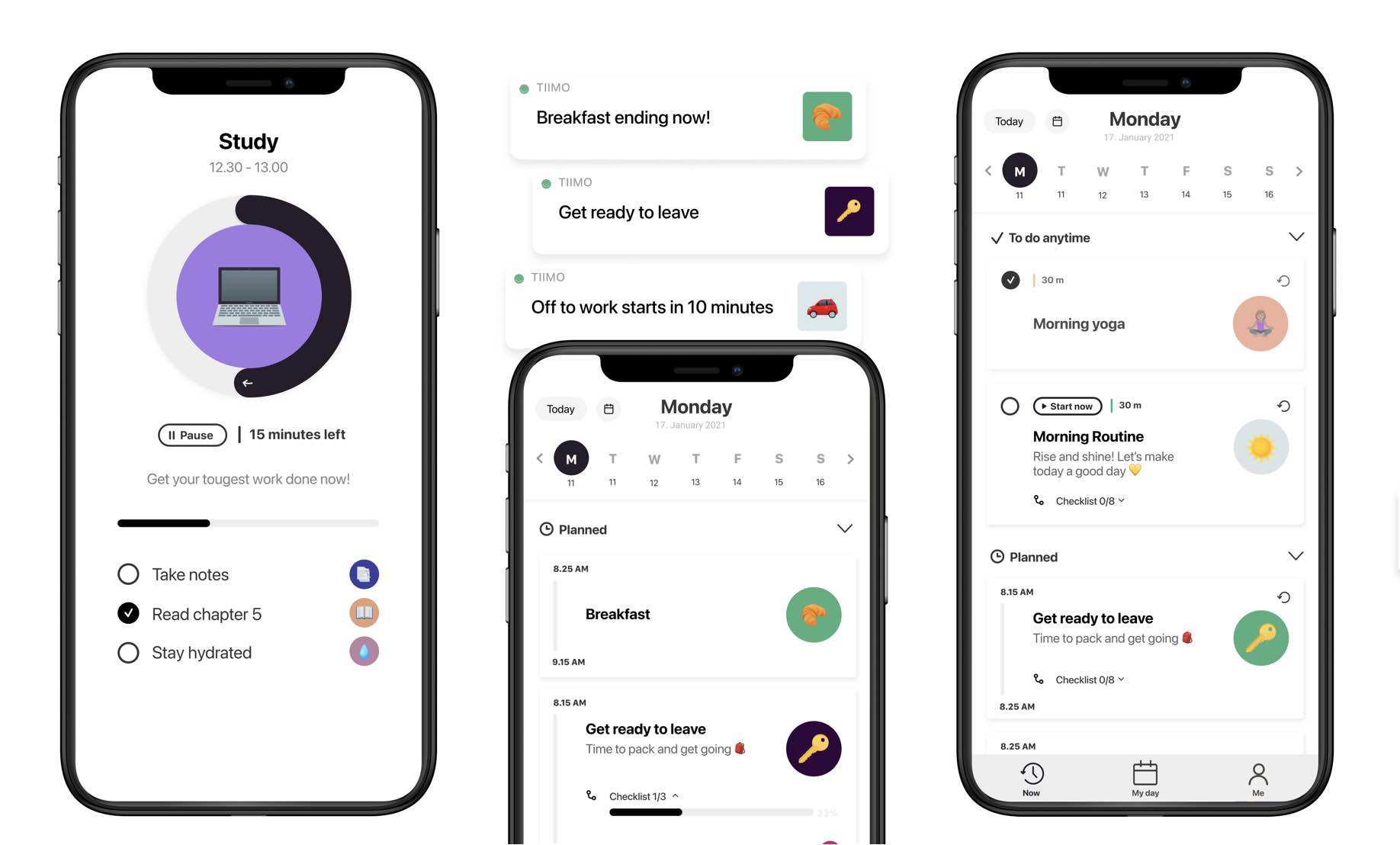
Tiimo is a visual ADHD planner designed to help neurodivergent folks stay on track without overwhelm. It breaks down tasks, adds structure, and shows your day in a super intuitive timeline.
Key features
- Visual Timeline: Color-coded routines make time feel more tangible
- AI Co-Planner: Breaks down big tasks into subtasks automatically
- Focus Timer: Built-in Pomodoro-style timers help with starting and staying focused
- Widgets & Live Activities: See what’s next without opening the app
- Mood Tracking: Log how you’re feeling to notice patterns over time
- Cross-Device Sync: Works on iOS, web, Apple Watch, and (kind of) Android
What I liked:
- I like how visual and flexible it is
- Widgets are helpful; I can glance at my next task or timer without switching apps.
- Mood tracking is a nice bonus.
What I disliked:
- The Android version still feels buggy and is missing some features. They say it’s being rewritten, but it’s not there yet.
- Doesn’t integrate with other systems like Google Drive, Notion..
- It’s not built for managing big projects, no dependencies, no collaboration tools.
- You don't have an Assistant who you can ask to schedule tasks, search notes or plan the day like with Saner.AI
- Subscription pricing is a bit unclear, and Android users still have to pay even though the app isn’t as polished.
Pricing:
- Free plan available
- Pro trial for 7 days
- Subscription required after trial (price varies by region)
Suitable for:
Individuals with ADHD who want a planner that’s visual, gentle, and designed around how their brain works, especially iOS users.
How to start:
Download Tiimo, try the free plan, and test the AI features during the trial. Stick to a few routines at first so you don’t get overwhelmed.
Tiimo Reviews (source)

9) Finch
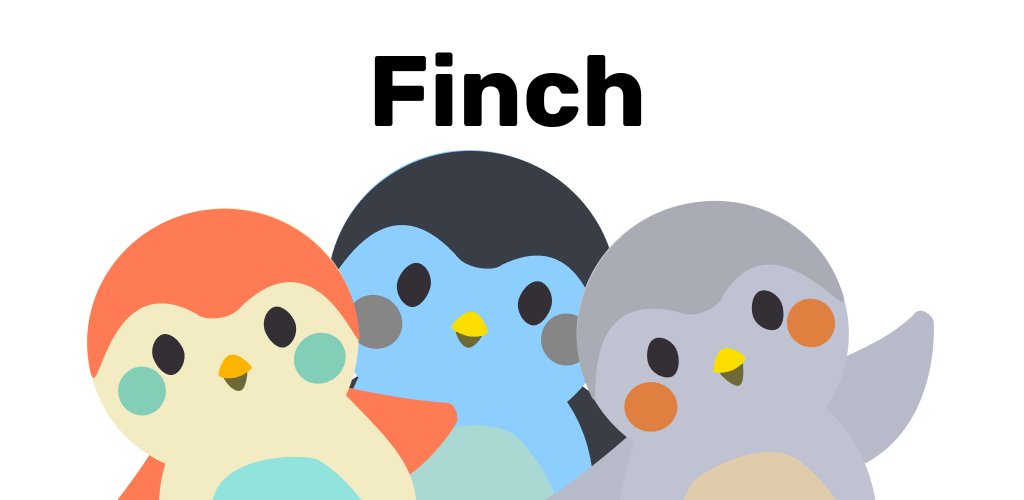
Finch is a gamified ADHD planner that helps you build healthy routines through small daily goals. Instead of checking off a to-do list, you’re caring for a cute virtual bird—and in the process, you’re taking care of yourself.
Key features
- Habit & goal tracking: Add daily tasks like meds, hygiene, water, whatever matters to you
- Mood check-ins: Quick scale ratings and guided prompts help spot patterns
- Breathing & focus tools: Includes calming exercises, soundscapes, and stretch sessions
- Gamified experience: You earn rewards and customize your bird and its world
- Journaling: Reflect on your day with gentle, guided questions
- No calendar stress: No time-blocking or deadlines
What I liked
- It feels good to use. No pressure. Just small wins.
- I liked how flexible it was.
- Mood tracking is simple and insightful.
- Everything’s in one place - goals, journal, breathing tools
What I didn’t like
- It’s a bit overwhelming at first- lots of icons, tools, journeys. Takes a few days to get the hang of.
- Some goals feel rigid. For example, if you set “drink 5 glasses of water,” it won’t count as partial progress.
- The mobile UI is cute, but not for everyone. If you don’t like gamified designs, this might feel too much.
- There’s no time-blocking or calendar view, so it’s not a traditional planner. More like a self-care tracker.
- You don't have an Assistant who you can ask to schedule tasks, search notes or plan the day like with Saner.AI
Pricing
- Free plan with core features
- Plus plan is around $9.99/month
- Annual plans vary (especially on Android vs iOS)
Suitable for
People with ADHD, especially great for those who enjoy gamified apps and want a planner that feels more like a companion than a tool.
How to start
Just download Finch, create your bird, and start by adding a few simple goals. Let it grow with you.
Ask ChatGPT
Finch reviews (source)

10) Goblin.Tools
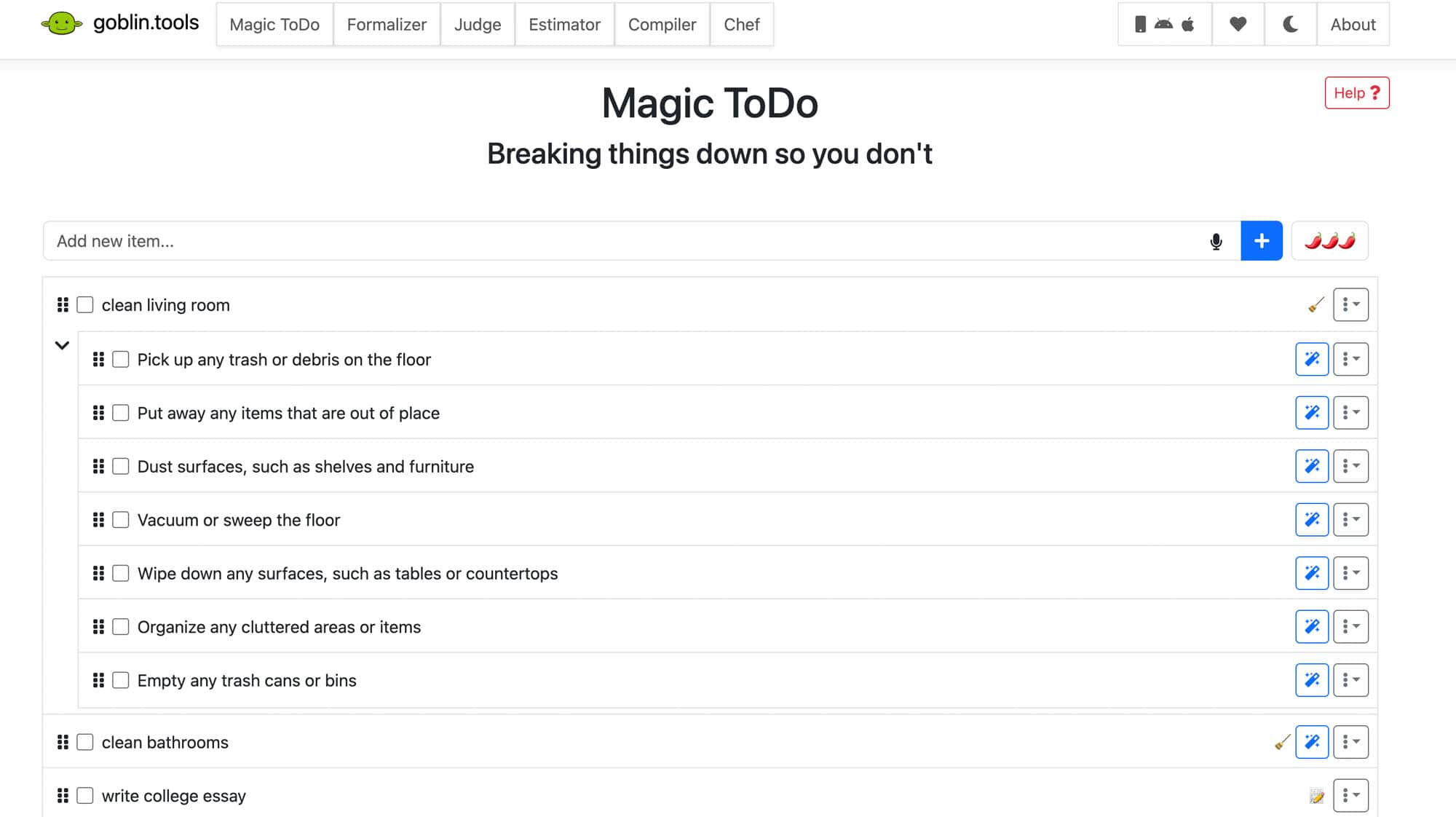
Goblin Tools is a simple AI ADHD planner that helps break down overwhelming tasks, estimate time, and communicate clearly. It’s made for neurodivergent brains and packs a set of micro-tools that make executive functioning easier
Key features
- Magic ToDo: Breaks down any task into bite-sized steps with adjustable detail
- Time Estimator: Guesses how long things might take, helpful for time blindness
- Compiler: Turns brain dumps into organized to-do lists
- Chef: Suggests what to cook based on ingredients
- Privacy-first: No ads, no logins required on the web, with a low-cost mobile version
What I liked
- I like how quickly Magic ToDo helps me go from "ugh" to "okay, step one..."
- The Time Estimator is super handy when I have no idea how long a task will take
What I disliked
- It’s not a full planner - you still need to move tasks to your calendar manually.
- There’s no built-in habit tracker, reminders, or calendar sync, so you’ll need another app for that.
- It can feel a bit fragmented at first since it’s a collection of tools, not one unified interface.
- You don't have an Assistant who you can ask to schedule tasks, search notes or plan the day like with Saner.AI
Pricing
- Free on the web
- One-time low-cost purchase for iOS or Android
- Optional donation or in-app upgrades
Suitable for
People with ADHD or executive dysfunction who want help breaking down tasks, estimating time, or writing more clearly, without diving into complicated productivity systems.
How to start
Go to goblin.tools and try Magic ToDo or Estimator first. No signup needed. If you like it, grab the mobile app for quick access on the go.
Conclusion: ADHD Planners Only Work If They Work For You
There’s no perfect ADHD planner - but the right one for you will make planning feel less like punishment and more like a small act of self-care.
Start small. Customize boldly. And above all, forgive yourself when you fall off.
Frequently Asked Questions about ADHD Planners
1. What is an ADHD Planner?
An ADHD planner is more than just a calendar or to-do list. It’s a system, digital or physical, designed to help people with ADHD organize their time, reduce overwhelm, and stay on track without burning out.
ADHD-friendly planners often include:
- Flexible scheduling (not rigid time blocks)
- Visual reminders and task breakdowns
- Built-in prompts to review, refocus, and reset
- Space for brain dumps and spontaneous ideas
Think of it as a planning tool that works with your brain, not against it.
2. Why do people with ADHD need a different kind of planner?
Traditional planners assume consistency and focus. ADHD brains don’t work like that.
People with ADHD often deal with:
- Time blindness (difficulty sensing how long tasks take)
- Context switching fatigue
- Forgetting priorities, even important ones
- Paralysis when faced with too many options
An ADHD planner addresses these pain points by:
- Showing the next step, not everything at once
- Using cues to prompt action at the right time
- Organizing tasks in a way that feels intuitive
3. What features should I look for in an ADHD planner?
Look for tools that support:
- Task breakdowns – helps you avoid overwhelm
- Reminders that repeat – so you don’t rely on memory
- Daily prioritization – suggests what to do next, not everything
- Low setup friction – easy to update, even on busy days
- Note linking – connect your thoughts without retyping
Bonus if the planner includes voice input, quick capture, or integrates with your calendar.
4. Are there digital ADHD planners?
Yes - and they’re growing in popularity. Digital ADHD planners often offer:
- Smart reminders and nudges
- Natural language input (“Remind me to call Sam Friday”)
- Integration with tasks, calendar, and notes
Popular digital ADHD planners include:
- Saner.AI – AI-powered planner built by and for ADHDers
- Todoist – Simple to use
- Sunsama – time-blocking
Each has different strengths. Saner.AI, for instance, turns your messy thoughts into structured tasks without tags or checklists.
5. What’s the best ADHD planner for adults?
The best planner depends on your lifestyle, but ADHD adults often prefer:
- Minimal setups
- Mobile access
- Visual cues and reminders
- AI assistance or automation
Saner.AI is a strong option for adults who juggle work and life. It gently nudges you when it’s time to refocus and helps you turn ideas into action without feeling micromanaged.
6. Can AI be used as an ADHD planner?
Absolutely. AI planners like Saner.AI act like personal assistants. It:
- Understand your natural language
- Pull up old notes instantly
- Suggest tasks based on context
- Nudge you when you drift
This is especially helpful for ADHD users who struggle with planning consistency. AI doesn’t forget what you meant - even if you did.
7. How do I start using an ADHD planner?
Start simple. Don’t try to “do it all.” Use your ADHD planner to:
- Dump your thoughts at the start of the day
- Pick 1–3 important tasks (no more)
- Use reminders instead of relying on memory
- Review and reset weekly
If you’re using an AI ADHD planner like Saner.AI, just chat with it like you would with a friend:
“Help me plan tomorrow”
“What did I forget to do from last Friday?”
8. Are there free ADHD planner tools?
Yes! Some ADHD-friendly planners offer free versions:
- Saner.AI – Free plan includes task reminders, smart search, and calendar sync
- Goblin.tools – Basic task managemen
- Todoist – Free option available
Start with a free plan to explore what works for your brain.
9. What’s the best ADHD planner for students?
Students with ADHD need planners that help them:
- Keep track of assignments
- Break down big projects
- Avoid last-minute cramming
Look for ADHD planners that:
- Remind you about due dates before the panic
- Include checklists for multi-step tasks
- Let you search notes by topic or course
AI tools like Saner.AI work great here - it finds old class notes fast and reminds you of forgotten tasks before it’s too late.
10. Can ADHD planners help with motivation?
Yes. ADHD-friendly planners reduce friction, which helps you start. They also:
- Give structure without feeling rigid
- Remind you why something matters
- Turn big goals into small, doable steps
Many people with ADHD don’t lack motivation—they lack clarity and cues. A well-designed planner gives you both.
11. ADHD Planner vs traditional planner—what’s the difference?
| Feature | Traditional Planner | ADHD Planner |
|---|---|---|
| Fixed structure | ✅ | ❌ (too rigid) |
| Visual cues/reminders | ❌ | ✅ |
| Task breakdown support | ❌ | ✅ |
| Handles distractions | ❌ | ✅ (built for focus) |
| Adaptable scheduling | ❌ | ✅ |
ADHD planners are made for real brains, real distractions, and real chaos. They don’t expect perfection—they help you stay afloat.
12. What's the best ADHD planner for professionals?
Professionals with ADHD often need:
- Smart prioritization
- Fewer apps to juggle
- Automatic follow-up reminders
Saner.AI is especially strong here. It combines notes, calendar, and task lists in one brain-friendly space. You can talk to it like a teammate, and it reminds you when things slip.
13. Can an ADHD planner reduce burnout?
Yes - when used correctly. A good ADHD planner like Saner.AI:
- Helps you focus on fewer things
- Gives clarity during chaos
- Nudges you to rest before exhaustion
You’re not lazy. You’re overloaded. The right planner makes your effort count.
14. How do I stay consistent with using an ADHD planner?
Staying consistent is one of the hardest parts, especially with ADHD. Most people fall off not because the system is bad, but because it requires too much effort to maintain.
To improve consistency:
- Keep it frictionless: Use a planner you can update quickly (voice input helps).
- Build a habit loop: Pair planning with an existing habit (e.g., review your planner with your morning coffee).
- Allow resets: Missed a day (or a week)? Just pick it back up. No guilt.
- Use reminders that come to you, not ones you have to check.
Planners like Saner.AI are designed to stay with you, even when you drop the ball. It nudges you back gently, no judgment.
15. Can ADHD planners help with emotional overwhelm?
Yes—this is one of the most under-discussed benefits.
For people with ADHD, emotional dysregulation is common. Overwhelm often comes not from the amount of work, but the feeling of being scattered or behind.
A well-designed ADHD planner like Saner.AI helps by:
- Externalizing your thoughts – so they’re not swirling in your head
- Breaking things down – so tasks feel doable, not impossible
- Prioritizing clearly, so you don’t waste energy deciding
- Providing structure during chaos, which creates a sense of control
Even just writing or saying “here’s what I need help with” can start calming your nervous system. ADHD planning isn’t just about getting things done - it’s about feeling grounded while doing them.
Stay on top of your work and life with the Top ADHD Planner

